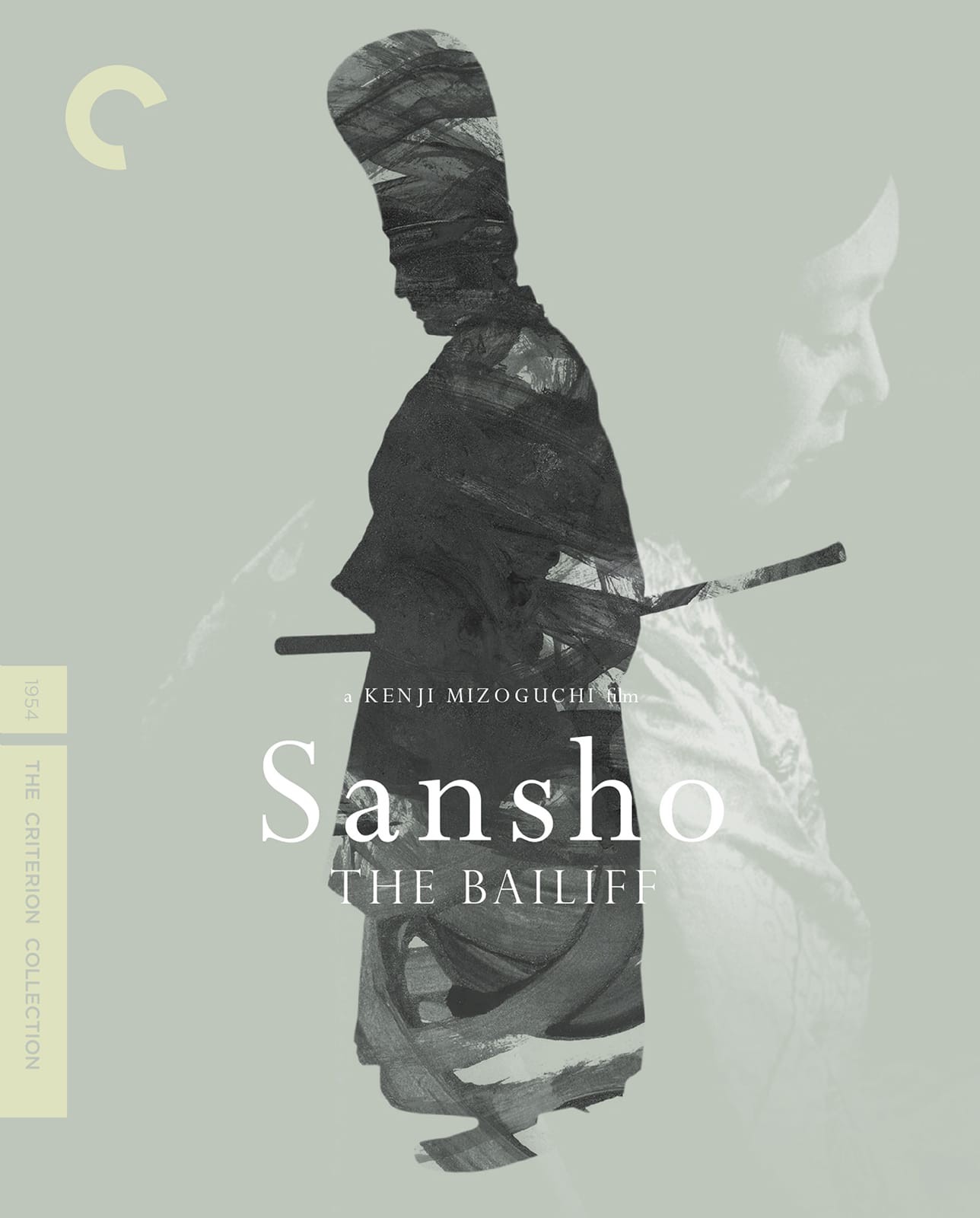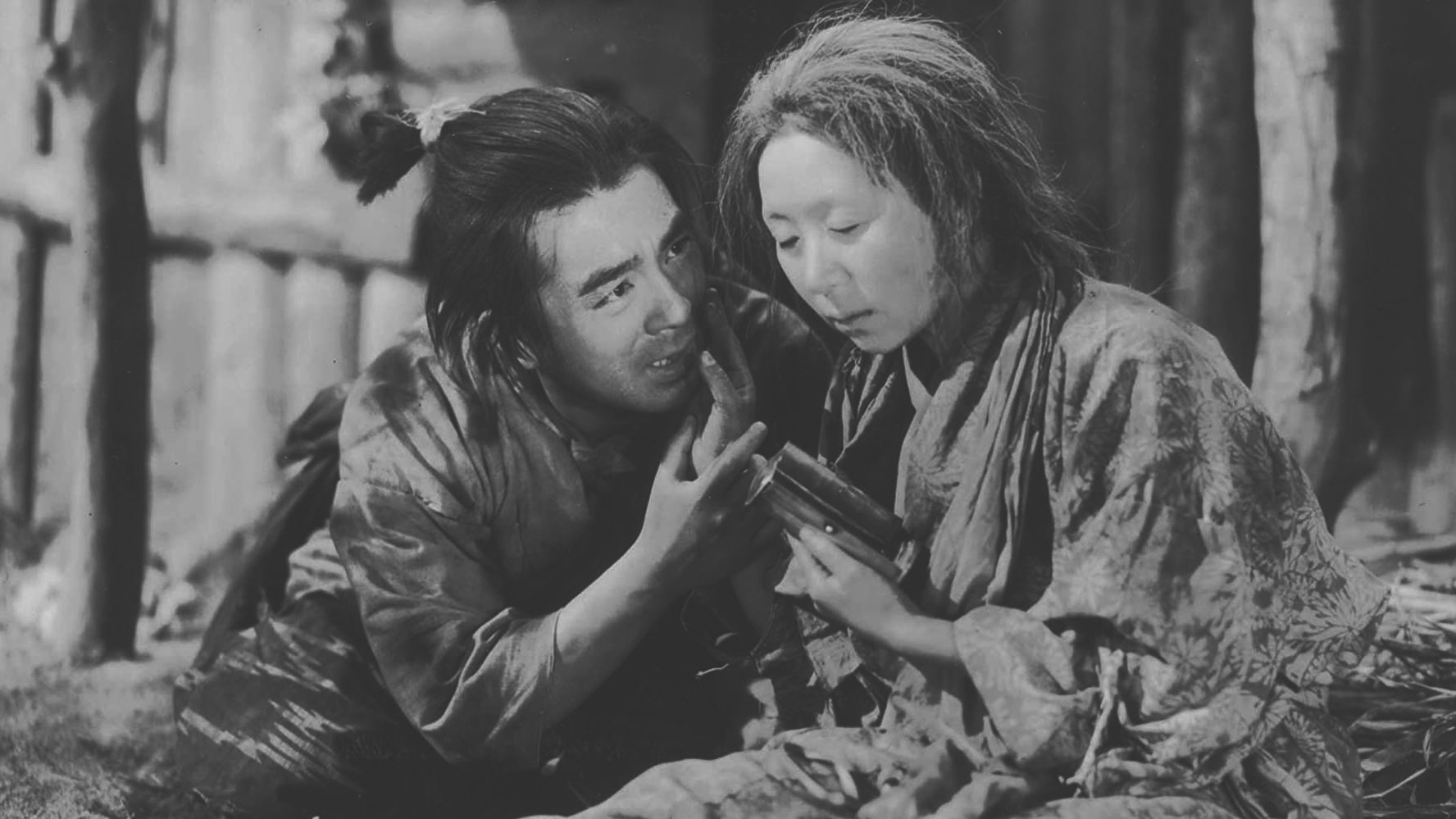Sansho the Bailiff (1954)
Film and Plot Synopsis
Sansho the Bailiff takes place in feudal Japan where a a pitiless feudal lord banishes a governor to a distant province for standing up for the rights of his impoverished people. The compassionate governor leaves behind his wife, Tamaki, his young son, Zushio, and his younger daughter, Anju, to fend for themselves. However, an even crueler fate awaits the family when, during an arduous journey on foot to reunite with him, the mother finds herself separated from her children. Now slaves for a cruel bailiff named Sansho, their new lives rips apart the family’s once noble dreams. However, life’s challenges don’t always break a resilient human spirit.
‘Sansho the Bailiff’ Movie Summary
 Sansho the Bailiff takes place in feudal Japan. We meet a governor a lord banished to a far-off province after he felt the governor was too lenient with the peasants under his supervision. Before he leaves for his banishment, the governor tells his son that “A man is not a human being without mercy. Even if you are hard on yourself, be merciful on others.”
Sansho the Bailiff takes place in feudal Japan. We meet a governor a lord banished to a far-off province after he felt the governor was too lenient with the peasants under his supervision. Before he leaves for his banishment, the governor tells his son that “A man is not a human being without mercy. Even if you are hard on yourself, be merciful on others.”
He makes his son repeat what he said, and urges him to remember the words. He also gives him a statuette of Kannon, the Goddess of Mercy to remind him. For six years, his wife (Kinuyo Tanaka) and children live with the former governor’s brother, while the former governor lives alone in the exiled province.
After six years, his wife and children journey to the exiled province to reunite the family. However, a peasant woman tricks them along the way, and she sells the three of them into slavery. The slave traders sell the mother into prostitution in the village of Sado. They sell the children, Anju (Kyôko Kagawa) and Zushiō (Yoshiaki Hanayagi), to manorial estate in Tango where they brutalize slaves. They face horrific conditions and their owners brand them with a hot iron if they try to escape. Sanshō the bailiff (Eitarō Shindō) manages the estate.
Sanshō’s son, Tarō (Akitake Kōno), is his second in command of the estate. Tarō is more humane than his father and takes pity on the two children when they first arrive. He is able to learn that they are not peasant children and come from a wealthy family. He convinces the children that in order to survive that they must keep their identities secret and stay at the estate until they grow up and they are old enough to make the long journey to their father’s distant assignment. Shortly thereafter, Tarō leaves his father’s estate out of disgust for his father’s treatment of the slaves.
Ten years pass and the children have grown to young adulthood in the slave camp. Idealistic Anju still believes in the teachings of her father and works to treat everyone with humanity. However, her brother Zushiō no longer follows his father’s principles. Zushiō even works as one of the overseers who punishes the other slaves in the mistaken belief that is the only way to survive his enslavement.
One day, Anju hears a new slave girl from Sado sing a song which mentions both her and her brother by name in the lyrics. The girl from Sado tells Anju that the song is a popular one from her former village, but she does not know Anju’s mother. Nevertheless, the song lyrics convince Anju that her mother is alive. Soon after, Anju tries to convince her brother to escape the estate, but he refuses. Zushiō tells his sister that she is being foolish. Their lack of money, and the difficult journey to Sabo, would make the escape near impossible.
A few days later, they order Zushiō to take Namiji, an older woman who is extremely ill, out of the slave camp to prevent the spread of illness. Zushiō is to escort her into the wilderness, and leaving her to die. His sister goes with him, and while they are breaking branches to build some cover for the old woman, they recall some of their memories of their journey with their mother ten years prior.
Zushiō decides that it is time to make their escape, and tells his sister to come with him to find their mother. Anju tells him no and asks her brother to take Namiji with him instead since she needs the most help. Anju convinces her brother that she will stay behind and distract the pursuing guards. Zushiō promises to return for Anju and then leaves into the mountains. However, once Anju returns to Sanshō’s estate she drowns herself in a lake rather than face torture and reveal her brother’s destination.
Zushiō, carrying Namiji, flees into the wilderness where they eventually find refuge at a temple. The priests give Namiji medicine that begins to speed her recovery. They even lie to the guards who have come looking for the runaway slave and misdirect them in their search.
Zushiō discovers that Tarō, Sanshō’s son who disappeared ten years prior, is one of the priests at the temple. He asks Tarō to take care of Namiji. He intends to go to Kyoto to appeal to the Chief Advisor on the brutal working conditions in Tango. The head priest of the temple writes a letter on Zushiō’s behalf as proof of who he is, and Zushiō sets out.
Once Zushiō arrives in Kyoto, the Chief Advisor refuses to see him believing that he is a simple peasant man. However, after they arrest and search Zushiō, the guards find the statuette of Kannon that Zushiō’s father gave him years before. Recognizing that Zushiō is no mere peasant, he agrees to meet with him. The Chief Advisor regretfully informs Zushiō that his father died a year prior while still in his exiled post.
However, the Chief Advisor offers Zushiō the post of the governor of Tango; the very province Sanshō has located his manor. Zushiō tells the Chief Advisor that his first act will be to free all the slaves in Tango province. However, the Chief Advisor advises against it since the Minister of the Right protects Sanshō’s estate. Additionally, the local governor does not have the authority to free the slaves under Sanshō’s rule.
Nevertheless, Zushiō’s first act as Governor of Tango upon arriving in the province is to declare that all the slaves are free; both on public and private grounds, such as Sanshō’s estate. No one in the province believes he can do this since governors have no command over private grounds. In defiance, Sanshō has his men destroy the signs which declare Zushiō’s new edict.
In response, Zushiō has Sanshō and all his men arrested for destroying the signs. He tells all the slaves on Sanshō’s property that they are free and begins looking for his sister. When the slaves tell Zushiō his sister killed herself right after he ran away, the news devistates him. He exiles Sanshō and his family, and then has the former slaves destroy the manor. Upon returning home, Zushiō resigns as governor since he has accomplished his goal of freeing the slaves.
Zushiō sets out for Sado to find his missing mother. Since he believes she is still working as a prostitute, he looks for her in the local whorehouse. Once there, the locals tell him a tsunami killed her two years prior. Despondent again, Zushiō heads to the beach his mother died. Once there, he finds a blind, old woman sitting on the beach singing the same song he heard years before.
Realizing that the blind woman is his mother, he embraces her and tells her that he has returned. However, his mother does not believe him; thinking that he is a local fisherman trying to deceive her. It is not until Zushiō gives her the statuette of Kannon, which his mother recognizes by mere touch, that she accepts her son and they embrace. Zushiō tells his mother that his father and sister have died, and that they only have each other.
Zushiō also apologizes for not coming to her in the garb of a governor, since he gave it up to follow his father’s teachings of mercy. His mother expresses her pride and admiration that despite everything that evil men did to him, he did not forget what his father taught him.
Additional Film Information
- Add the film to your collection today
- Listen to our film review
- Sansho the Bailiff Criterion website
- Peruse IMDb’s article on Sansho the Bailiff
- Learn more Sansho the Bailiff information at Wikipedia
- Read Sansho the Bailiff reviews from the folks at Rotten Tomatoes
Rate the Film!
Our Rating
Our Rating
Daiei Studios released Sansho the Bailiff on March 31, 1954. Kenji Mizoguchi directed the film starring Kinuyo Tanaka, Yoshiaki Hanayagi, and Kyôko Kagawa.
